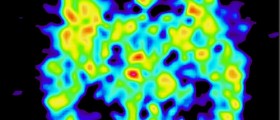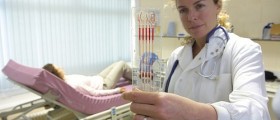
Introduction
Subarachnoid bleeding is bleeding into subarachnoid space. There is a variety of causes that can lead to subarachnoid hemorrhage. Head trauma or injuries, arteriovenous malformations, rupture of cerebral aneurism are some of the possible causes. Subarachnoid hemorrhage is severe and life threatening condition which has to be treated urgently.
Symptoms of Subarachnoid Hemorrhage
The bleeding into subarachnoid space is always followed by strong and sudden headache. Patients are sensitive to light. This condition is called photophobia. Irritation of the meninges leads to stiff neck. Increased intracranial pressure which regularly occurs in case of subarachnoid hemorrhage leads to nausea and vomiting. Even seizures are possible.
Possible Complications of Subarachnoid Hemorrhage
Complications may develop during the very bleeding or they can occur after the patient is treated.
Repeated bleeding is only one of the possible complications. Namely, the blood vessel may contract initially and the bleeding can only illusory stop. However, the increased blood pressure may lead to re-occurrence of the bleeding on the initial spot of bleeding. This complication develops twenty-four hours after the initial bleeding. The prompt surgical intervention is required as this way not only will the bleeding be stopped for good but potential further complications can be avoided as well.
Another complication of subarachnoid hemorrhage is communicating hydrocephalus. Hydrocephalus is a condition that features with excessive collection of cerebrospinal fluid inside the brain ventricles. Special structures on the arachnoid membrane called villi are in charge of re-absorption of cerebrospinal fluid. However, in case of bleeding into the arachnoid space the blood may prevent villi from functioning properly and the brain chambers are left with the excessive cerebrospinal fluid. This complication can be also avoided if surgical procedure is performed on time.
Seizures are additional complication of subarachnoid hemorrhage. They are curable and require proper treatment with anticonvulsants.
Cerebrovascular vasospasm is the leading cause of the morbidity and mortality among people who have experienced subarachnoid hemorrhage. The blood vessels are induced to constrict after the initial bleeding. The substances that are responsible for this reaction have not been identified yet. Still the Vasoconstriction of the blood vessels results in insufficient blood supply of certain parts of the brain. This complication can develop between the first and 28th day after the primary bleeding.
Early Detection and Diagnosis
The best way is that subarachnoid hemorrhage is diagnosed on time and treated properly. CT scan of the head is extremely helpful and it can point to the exact spot of the bleeding. CT scan can additionally help in detection of communicating hydrocephalus. And if lumbar puncture is performed the result will show the presence of blood in cerebrospinal liquid.

















Your thoughts on this
Loading...